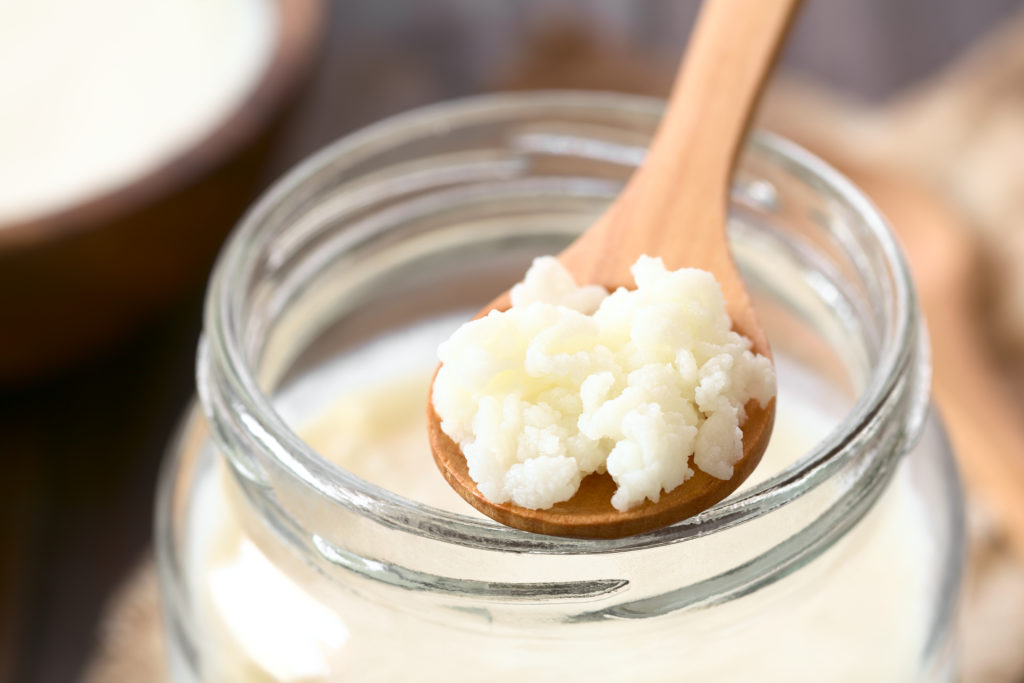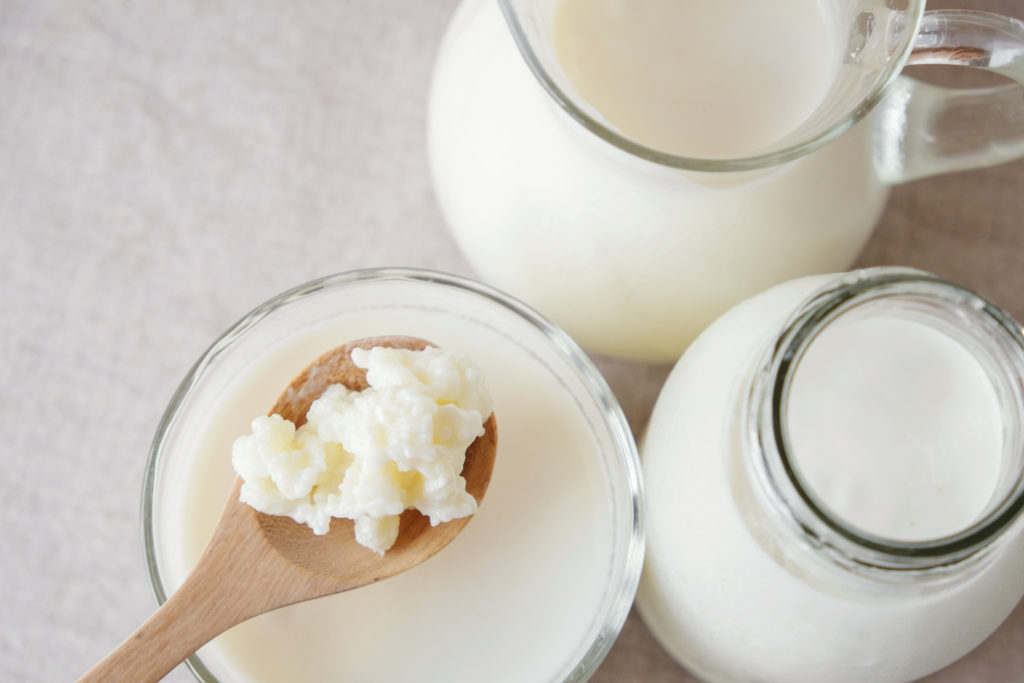Still hungry?
Explore more recipes.


* Note: If you don’t want to make a batch of kefir right away, simply cover the grains with fresh milk and store in the refrigerator until you are ready to culture them again. Change the milk every 7 days to keep your stored grains fresh.
They are a mix of bacteria and yeast that form a gelatinous mass in a crystalline matrix made of proteins, fat and carbohydrate. They can be quite tiny to start with but can grow to resemble cauliflower florets.
If you know anyone who is making kefir, they will always have some grains to give away! Kefir grains multiply over time when they are well maintained, and soon you’ll have some to share too.
You can also purchase grains in a packet. These grains will be very tiny and will need to be reactivated by pouring a cup of fresh milk over the grains and refreshing daily for a few days or longer, depending on the ambient temperature. Use a very fine sieve to collect these early, tiny grains. More detailed instructions will come with the package.
To read more about kefir, read our article: All about Kefir: Answers to Five Top Questions.
